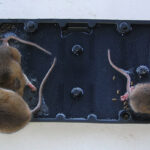
Store-Bought Pumpkins Are Hiding A Dirty Secret – Choose A Local Pumpkin Patch Instead
- Thomas Nelson
- October 14, 2023
- Sustainable Living
- 0 Comments
As Halloween approaches, one of my favorite traditions is selecting the perfect pumpkin to carve into a spooky jack-o’-lantern. However, recently I learned that there’s a dirty little secret lurking beneath the festive facade of those store-bought pumpkins that might make you think twice about where you source your seasonal squash. Contrary to popular belief, these pumpkins may harbor a toxic secret, and the solution to a safer Halloween might just be a trip to your local pumpkin patch.
The Global Pumpkin Industry
The United States holds the title of the largest pumpkin exporter in the world, but it’s important to note that the bulk of these pumpkins are not destined for our dinner tables. When it comes to the classic carving pumpkins used for jack-o’-lanterns, they are predominantly grown in two main regions: Illinois and Mexico. While these pumpkins are primarily ornamental, the grim reality is that they are often subjected to heavy doses of toxic and persistent pesticides. Even though most of these pumpkins aren’t destined for human consumption, the heavy use of pesticides has a downstream effect on the environment and, while handling, you’re still exposed to them.
The Hidden Dangers of Jack-o’-Lantern Pumpkins
A common misconception is that the thick skin of pumpkins shields the edible flesh from the harmful effects of pesticides. However, the truth is more unsettling. Many of the chemicals employed in pumpkin cultivation are systemic, which means they permeate the flesh of the pumpkin and cannot be washed away. One alarming instance from 2014 saw California pumpkin farmers resorting to the use of nearly 14,000 pounds of malathion to meet the insatiable demand for Halloween pumpkins.
Malathion is a suspected endocrine disruptor, a cholinesterase inhibitor, and a possible carcinogen. A cholinesterase inhibitor interferes with the normal breakdown of acetylcholine, a crucial neurotransmitter in our brains. This interference may offer temporary relief for the loss of functioning brain cells, but the long-term consequences on human health are deeply concerning. Furthermore, conventional pumpkin cultivation often involves the use of other toxic chemicals such as clomazone and ethalfluralin. These chemicals not only pose health risks to humans but also wreak havoc on the environment, polluting the air, decimating beneficial insects, and contaminating groundwater.
A Lack of Regulation for Ornamental Crops
One troubling aspect of this situation is that crops grown for ornamental purposes, like jack-o’-lantern pumpkins, remain virtually unregulated. For instance, when the Environmental Working Group (EWG) releases its list of crops with a “high pesticide residue score,” this data solely pertains to pumpkins and squash intended for human consumption, not those grown for decorative purposes.
The implication is clear: there’s no way to ascertain the pesticide residues present on or within your jack-o’-lantern unless you opt for USDA organic pumpkins from a certified source. If you choose a conventional pumpkin, regardless of its kind, it’s paramount not to consume any part of it, including the seeds, as these dangerous chemicals pervade all edible portions.
The Safer Choice: Pumpkin Patches and Organic Options
In light of these concerns, I found myself wondering what the best alternative was. Fortunately, the better choice is pretty clear: visit a local pumpkin patch or choose USDA-certified organic pumpkins from a reputable source. Pumpkin patches often prioritize sustainable and responsible cultivation practices, minimizing the use of harmful chemicals. These options not only ensure a safer and healthier choice for your jack-o’-lantern but also support local farmers and environmentally friendly farming practices.
While the allure of store-bought pumpkins may be tempting, their hidden secret of pesticide exposure and potential health risks should give us pause. By turning to pumpkin patches and organic alternatives, we can embrace a safer, more environmentally responsible Halloween tradition, free from the haunting specter of toxic chemicals.

